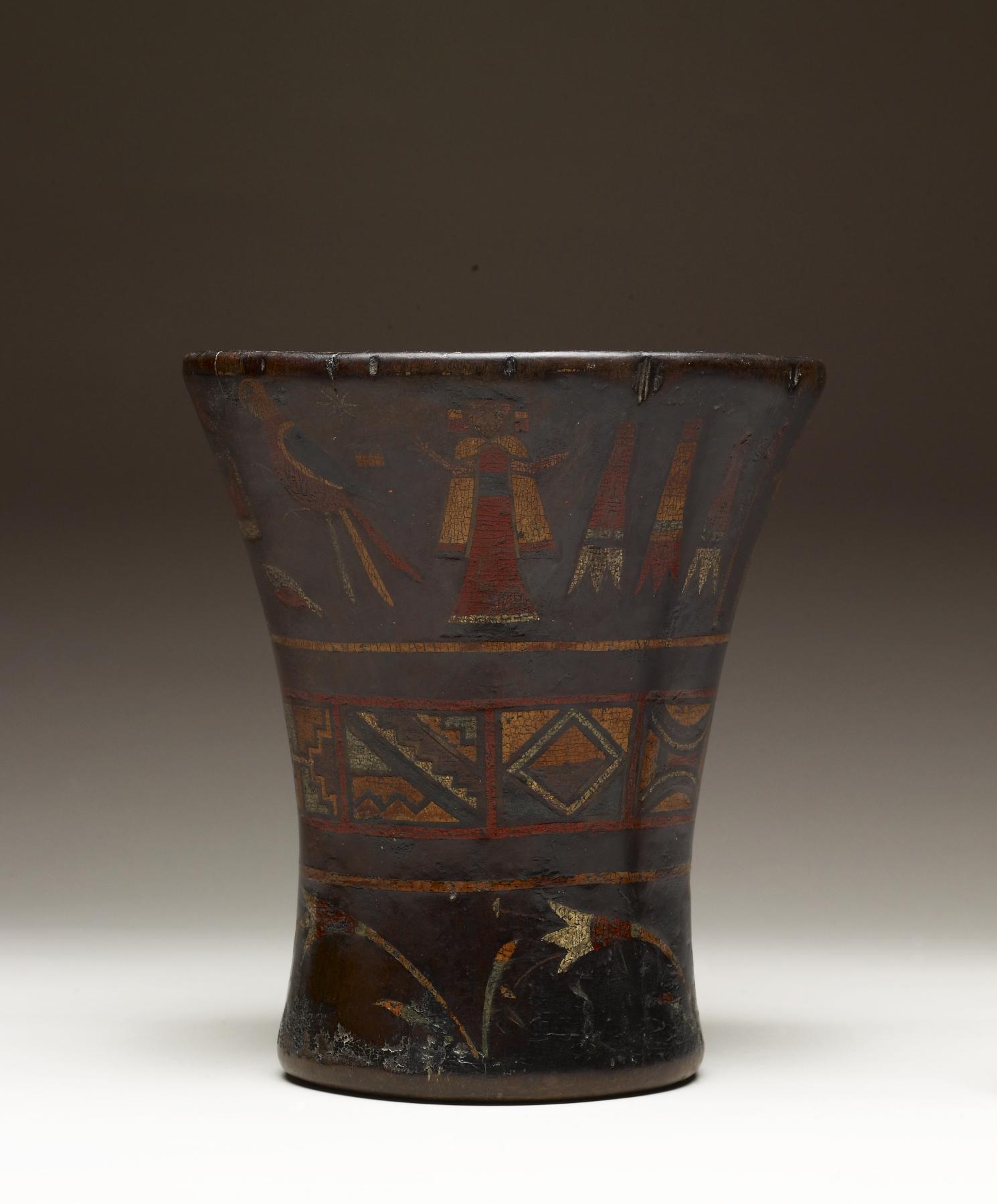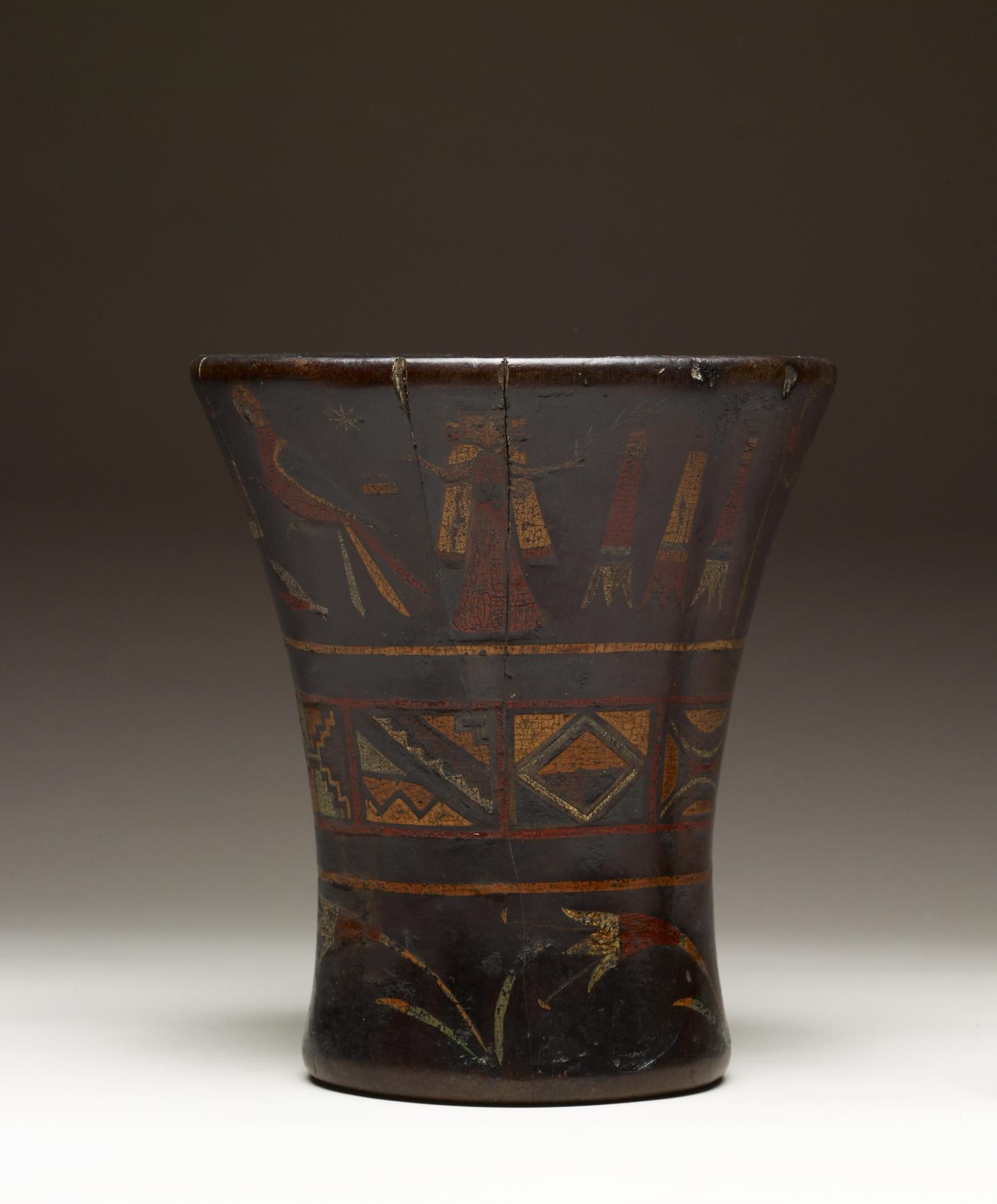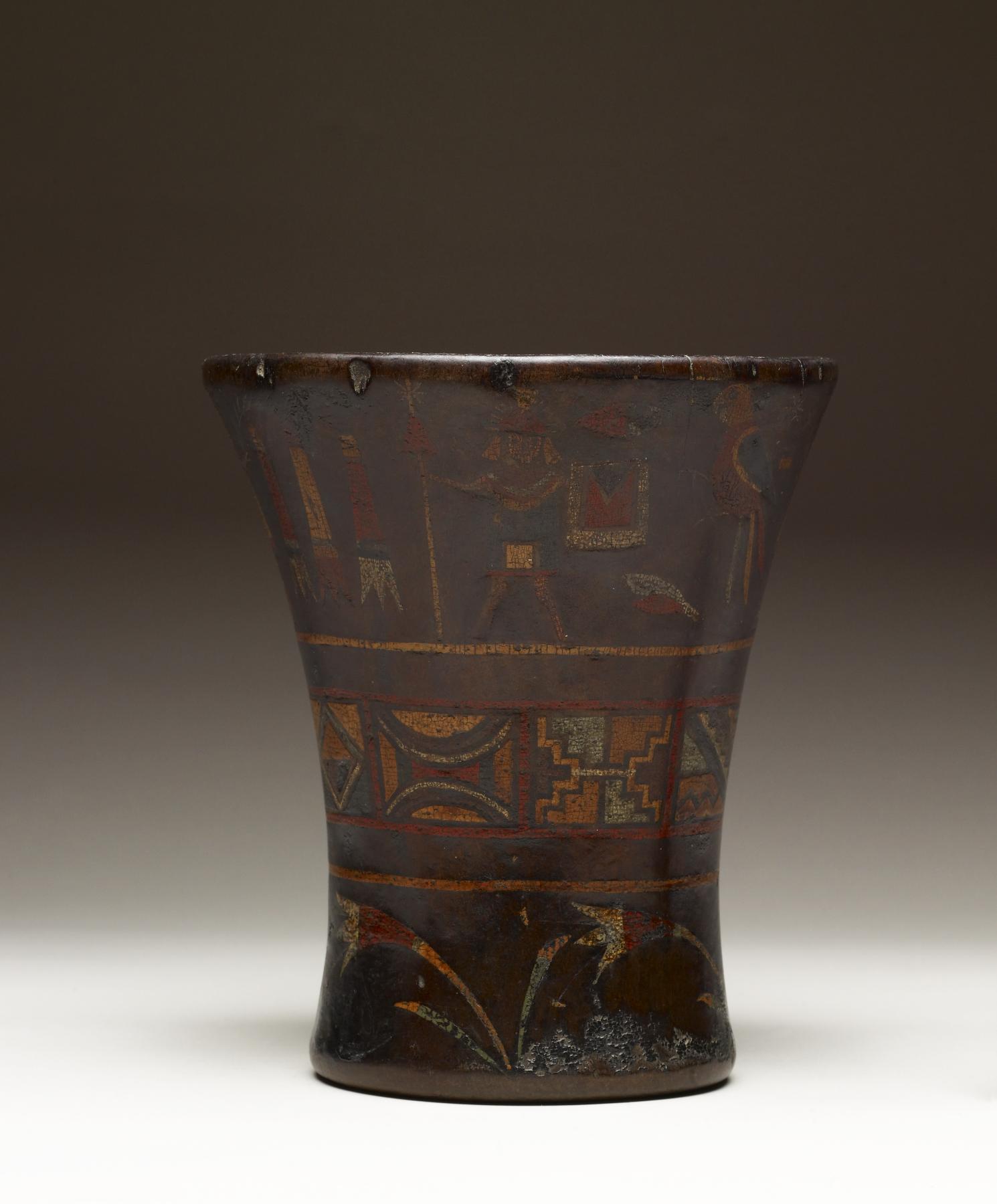"Kero" (Libation Cup)
(Ancient Americas )
In Andean cultures, beaker-shaped wooden drinking vessels, called keros, have been used in feasts for millennia, especially when toasting to one’s ancestors. Keros were filled with chicha, a drink, often fermented, made from corn. Higher-ranking Incas ate the meat of deer or alpacas and hosted huge public feasts, where everyone consumed corn, potatoes, and other root vegetables.
Male and female figures wearing Inca dress and elaborate headdresses line the vessel’s top register. The figures in long skirts with a mantle around their shoulders are Inca queens. Alternating with them are Inca kings, who wear tunics and headdresses with tufts of red wool, a sign of their nobility.
By the early 17th century, the Spanish had already colonized much of South America. This cup attests to the persistence of indigenous ancestral toasting traditions and the celebration of Inca royalty in the face of colonization.
Provenance
Provenance (from the French provenir, 'to come from/forth') is the chronology of the ownership, custody, or location of a historical object. Learn more about provenance at the Walters.
Purchased by Georgia de Havenon, New York; given to Walters Art Museum, 2016.
Exhibitions
| 2018 | Crowning Glory: Art of the Americas. The Walters Art Museum, Baltimore. |
Geographies
Peru (Place of Origin)
Measurements
Overall: H: 7 × W: 6 3/16 in. (17.8 × 15.7 cm)
Credit Line
Gift of Georgia and Michael de Havenon, 2016
Location in Museum
Not on view
Accession Number
In libraries, galleries, museums, and archives, an accession number is a unique identifier assigned to each object in the collection.
In libraries, galleries, museums, and archives, an accession number is a unique identifier assigned to each object in the collection.
2011.20.18












